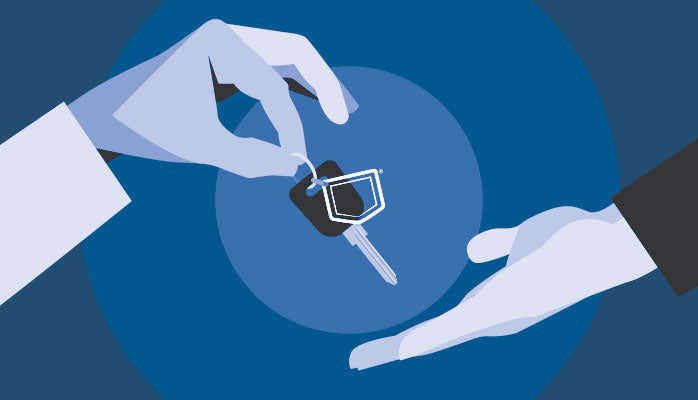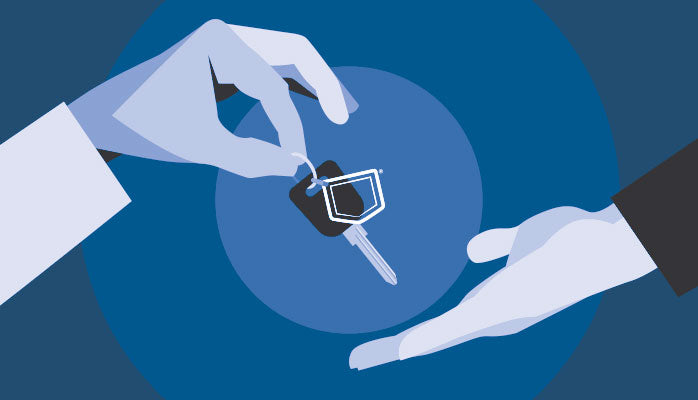
My work life totally changed as of last Friday.
This was not unexpected… in fact, in some ways, I’ve been preparing for this since the day I started my company SCOTTeVEST about 15 years ago.
I am still the CEO, but with the help of my team, I dismantled and totally rebuilt what it means to be CEO. It was not unlike taking apart a classic car and rebuilding it into a leaner, louder muscle car.
In my old role as CEO, I was a control-freak, a micro-manager, a hands-in-every-project style of leader. It was natural to me, and it worked. But it also made every project MY project.
In my NEW role as CEO, I will still provide the vision, but not the operations. The evangelism without the execution. The approvals, not the details.
It’s a 180 degree turn, and it’s scary. But it’s also liberating.
The idea of redefining my role as CEO has been in the works for some time, but now that it has arrived I was hit with a rush of emotions ranging from sheer happiness to confusion to nervousness to excitement, and a whirlwind of thoughts about new beginnings.
This is why I did it.
They Were Ready
I use the word “they” with intent: a company CAN’T be ready. Computers and boxes of products can’t be ready or unready. But the people that make up the company need to be capable of not only sustaining what has already been built, but growing it, expanding it and evolving it without the Founder/CEO being involved in every decision.
The people need to be ready for any major shift, and my people were ready for it to happen. Getting them there was part luck, part skill and a lot of hard work (mostly from them).
Earlier this year, I had the idea that I may be able to change my role and reduce operational responsibilities in favor of being “the figurehead” or “the visionary” or “the evangelist.” With that in mind, we started to put some plans in place.
I stayed out of the office more. I checked in less. My (infamous) diet of 300-500 emails per day was trimmed by at least half. I let my capable people make bigger and bigger decisions with more money on the line, and for the most part, that was a great decision.
It was an incremental process to find how much responsibility each person in the organization can handle. Everyone has a limit, but – without exception – everyone had more capacity than I initially gave them credit for having. It was not always in the area they were initially hired for, but across the board, the team rose to the challenge.
Amongst them, a leader emerged.
I Have Confidence
The same level of “we can figure it out” confidence that it takes to start and run a company are required to transition important tasks within a company. When you have an unproven idea, that entrepreneurial passion can be a little blind, and it has to be. Before your business is running at full steam, it’s running on faith.
I have a different kind of confidence now. It’s not confidence that I can make it work, or that I can figure out how to deal with whatever challenges will appear over the unpredictable horizon. I have confidence that my team can do these things, too.
My wife Laura has been with me since day 1. If you have read my book Pocket Man, you know how instrumental she was in the creation and growth of SCOTTeVEST. I literally – using “literally” the way people over 35 use it – could not have done it without her.
But it takes more than one leader to run a company, and that is where Marshall Rule comes in. Marshall was hired as a “Marketing Implementer” about two years ago, and he very quickly proved himself to be a capable operator. In the ensuing holiday seasons, slow months, wins and “failed experiments” he has stood strong and done what is necessary, whenever it is necessary.
I have confidence in him, and that’s why I have effectively turned over the operational reins. If I stepped out of my role as the “control freak CEO” without Marshall to fill the “vacuum of power,” the company might lose momentum. I am confident that he can handle the pressure, because he has handled 50%, 70%, 95% of that same level of pressure before.
Transitions like mine are only possible with hard-earned confidence, strong leadership within the team, and commitment from all parties.
I Needed Ground Rules
Like pretty much any CEO/Founder, I crave control. Which means that I was making all the rules… including the rules for myself. If I wanted to change them, I had to look no further for permission than the mirror. It’s good to be king, but it’s not so great for maintaining a consistent and structured work environment.
With Laura and Marshall’s help, I now have the ground rules that I need in my new CEO role. Here are a few, and compared to how I’ve run my business for a decade and a half, they are pretty restricting. I love it.
-
I won’t email any employees directly (except the exec team), but I will maintain awareness of what is going on by looking at Basecamp, our project tracking system. If I have comments, I’ll funnel them through Marshall.
-
I’m not “checking out” but I will stay out of the minutia completely. The big picture is my only picture.
-
I am a resource, but not an approver of new initiatives. Employees can bounce ideas off me any time without feeling like a bunch of random to-dos will necessarily come from it (unless Marshall says so, of course).
What’s Next?
This is an experiment, and the stakes are my lifestyle and my future. In many ways, the biggest act of faith is putting my future in other people’s hands, and paradoxically, it actually feels more freeing to do so. It helps to know that my company is strong and will continue to grow without me needing to touch every single thing that happens in it.
If my transition experiment is to work, it will require more responsibility from each employee, and more leadership from the executive team. Clarity is key, and rather than ideas bouncing off me or flowing through me, there will be a new, single point of management and a real org chart for perhaps the first time since there were only two people on it.
This transition really does feel like a new beginning.
For example, I spent some time this weekend catching up with my good friend Thomas Hawk discussing all the photography that I have and what to do with it. My dream job really would be a graphic designer or video editor, because I love to be creative, but have rarely had the time to explore that while running all aspects of my business.
But what will I do next week, and the week after? My transition isn’t intended to be a retirement… it can’t be a retirement. Perhaps I’ll write another book. Or go on a public speaking tour. I’m a natural networker, so recruiting may become my “day job” at SCOTTeVEST.
I do know that having the freedom to evangelize the brand and get out and meet customers are “musts” on my list. I am also starting an organization called the Pocket Change Foundation as a charity, which will make a massive difference in other people’s lives. Stay tuned for updates about that… it’s going to be amazing.
I’m ready for my next big adventure, and open to everything, including ideas. Have you taken a big plunge? Comment below and let me know how it changed your world.
For more thoughts about entrepreneurship, business and life, follow me on Facebook. Be sure to follow me at the top of this page for future LinkedIn articles.
ABOUT SCOTT JORDAN and SCOTTeVEST
Scott Jordan is the CEO and Founder of SCOTTeVEST, which creates multi-pocket clothing designed to carry electronics. He is the author of Pocket Man: The Unauthorized Autobiography of a Passionate, Personal Promoter.

Read a sample of Scott’s book for more about his experience on Shark Tank and the pocket empire he has built.
Interested in working at SCOTTeVEST? The team is growing and there are several openings available for motivated candidates. Be sure to send a thank you note!

